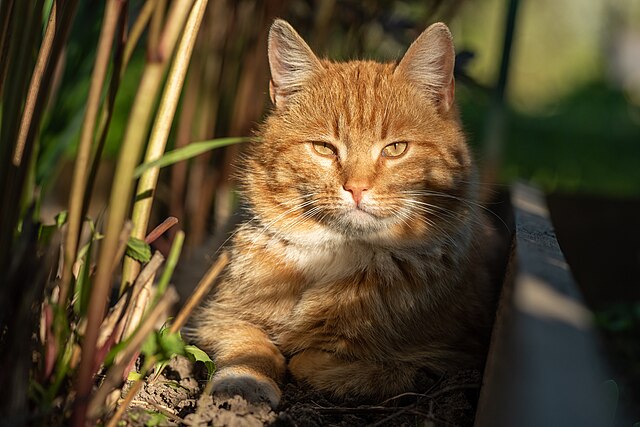
Growing houseplants when curious cats are in the house can be challenging. We want our cats to be safe and happy while keeping our houseplants intact. You can accomplish both with a few simple strategies.
Boost indoor gardening success by selecting plants suited to your home’s growing conditions and gardening style. Then be sure to remove any toxic plants to ensure your pet’s safety. Consult with your veterinarian and visit the American Society for the Prevention of Cruelty to Animals (ASPCA) for a list of pet-safe and toxic plants.
Create a list of all the plants you are growing. Include both common and botanical names for accurate identification. Do a bit of research on the care they need and their toxicity to your pets. If you suspect your pet has ingested a toxic plant, you’ll have the proper plant name when contacting your veterinarian.
Match the pet-friendly plants you select to their preferred light conditions. An east- or west-facing window provides enough light for most indoor plants. Keep those that need brighter light within two feet of a window. Those that prefer lower light can be grown near a north-facing window or up to six feet back or off to the side of an east- or west-facing window.
Keep toxic plants out of the reach of curious cats. This can be challenging if your cat is skilled at jumping and climbing. There are so many beautiful houseplants it may be safer to simply avoid those that are toxic.
Make your houseplants less appealing to your cat with the smell of citrus. Spray a mixture of lemon, lime, or orange juice diluted with some water on the leaves of your plant. Or purchase one of the commercial mixes. If you don’t want to spray your plants, place citrus peels in the pot.
Give your cat a pot of grass to nibble on and enjoy instead of your houseplants. Most cat grass kits contain wheatgrass, oat grass, ryegrass, or a mixture of these. A pot of cat grass can help entertain your cat, provide fiber and some micronutrients, and aid in digestion.
There are several theories as to cats’ attraction to greenery. One theory suggests plants were used to help them regurgitate undigested parts of their prey. Many cat owners find it also works for hairballs. Another theory suggests that greens provide vitamins and minerals, may promote health, and aid in digestion.
Prevent curious cats from knocking over any of your plant containers with the help of mounting putty. A couple of pieces on the bottom of the pot will help reduce the risk of toppling.
Prevent cats from using indoor plants as litter boxes. Cover the soil surface with coarse mulch, like cork or large nugget mulch. If this is not an option, spray the soil surface with the citrus and water mix to help discourage digging.
Regular play can entertain your cat, help reduce stress, and even reduce plant nibbling. This is also good for your well-being and the beauty of your indoor plants.
Implement these strategies and you’ll be able to help your cats and plants coexist in your home.
Melinda Myers has written more than 20 gardening books, including Small Space Gardening. She hosts the “How to Grow Anything” DVD series and the Melinda’s Garden Moment TV & radio segments. Her website is MelindaMyers.com.
Related Articles & Free Email Newsletter Sign Up
6 Steps to Use When Introducing a Cat to a Dog
Siamese Cats Form Strong Bonds With Their Owners


Comment here